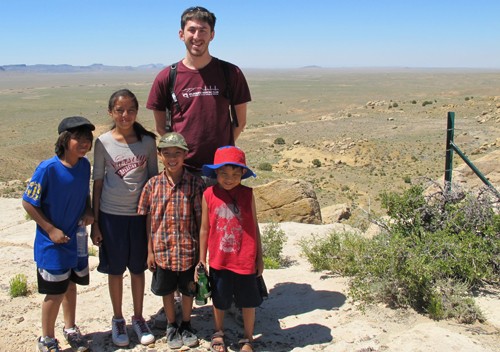Art, writing and poetry can help relieve stress and rejuvenate busy medical students.
The Program in Medical Humanities in the College of Medicine gives students a creative outlet through open microphone poetry readings, a literary magazine, journaling and elective courses. Students receive credit for medical humanities courses but can participate in other programs whenever they want.
The program began five years ago to encourage students to think outside of the “”science world,”” according to Dr. Ron Grant, director of the Medical Humanities Program in the College of Medicine.
“”The idea is to give students the opportunity to use the other half of their brain,”” Grant said.
The amount of work in medical school can often overwhelm students.
“”Medical school is just a big change of life,”” said fourth-year medical student Raquel Cisneros. “”It’s a lot of stress at times.””
Intense, science-based classes can leave little time for the human element in medicine.
“”Everything we’re learning is biology,”” said Myles Stone, a second-year medical student. “”We don’t really emphasize connecting with other people or how to tell them bad news.””
Between 10 and 20 percent of students participate in some facet of the Medical Humanities Program, Grant said. Students can take an elective course in narrative medicine, in which they discuss literature and poetry as it relates to medicine. There are also several ways for students to share their original work.
Students, faculty and patients can share their writing at the monthly Art Aloud open microphone event, held in the Arizona Health Sciences Library.
“”People just show up and read something they want to read, anything,”” said Nancy Coleman, director of Art Aloud and associate specialist for pediatric critical care in the College of Medicine. “”Or they can just come to listen.””
About 30 people attend the event each month, according to Coleman.
“”The feedback we consistently get is the appreciation for this break of artistic and creative endeavors in what is a mostly scientific day,”” she said.
First-year medical student Jason Patel has read his poetry during Art Aloud several times this semester. Patel said he has written poetry for over five years but does not have time to attend poetry readings at other venues.
“”It’s just easy to lose hobbies when you’re working all the time,”” he said.
Art Aloud allows Patel to share his work and bring humanities into his life.
“”I think it’s a good way to maintain a connection with stuff outside of the medical world,”” Patel said.
The program’s annual publication, Harmony Magazine, features work like poems, short stories and photographs. Submissions are also selected to win prize money as part of a competition.
“”It’s like an outlet for med students and what they go through,”” said Cisneros, a former editor-in-chief of the magazine.
Cisneros said the publication exposes the hidden talents of many of her classmates.
“”You don’t really see this side to them because we’re always talking about medicine,”” she said.
Grant also holds a monthly journaling group for medical students. He said journaling can help students relieve stress and reflect on their own identities as they go through school.
“”They may realize through the process what they were so uptight about is not actually as big of a deal as they thought,”” Grant said.
Stone began journaling as part of a class when he first ended medical school and has continued to journal about once a month.
“”I kind of thought it was nice, and a nice way to unwind,”” Stone said.
Stone meets with Grant and other students monthly to discuss the journaling.
“”This helps us remember why we became medical students in the first place and kind of the bigger picture,”” Stone said. “”Without a doubt, it’s making us better doctors.””








